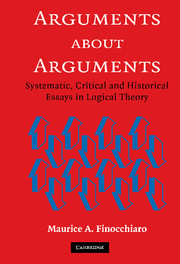Introduction : An Approach to a Branch of Logic
Published online by Cambridge University Press: 05 February 2015
Summary
When I first began thinking about the issues discussed in this book, some four decades ago, one of the problems I was concerned with was the existence of God. I felt the problem to be of vital importance, as important as anything that was a matter of life and death; indeed that it was a question of everlasting life, of eternal salvation or damnation. Thus I tried to learn all I could about the arguments for the existence of God. I wanted to be sure that I knew them all and none escaped my attention; that I understood them properly and did not misinterpret them; and that I could evaluate or assess their correctness, worth, or strength. This concern led me to read the relevant works of classic authors such as Aristotle, St. Anselm, St. Thomas Aquinas, Blaise Pascal, and David Hume, as well as those of contemporary authors like Karl Barth, Antony Flew, Alasdair MacIntyre, John Robinson, and Wallace Matson; and I soon realized that another aspect of the same problem was to learn, understand, and evaluate the arguments against the existence of God, such as the objection from evil.
Examples of the questions I happened to think about are the following. The first of Aquinas's arguments begins with the undeniable premise that there is motion in the world and by a series of steps arrives at the conclusion that there must be a prime unmoved mover, which is called God.
- Type
- Chapter
- Information
- Arguments about ArgumentsSystematic, Critical, and Historical Essays In Logical Theory, pp. 1 - 18Publisher: Cambridge University PressPrint publication year: 2005

